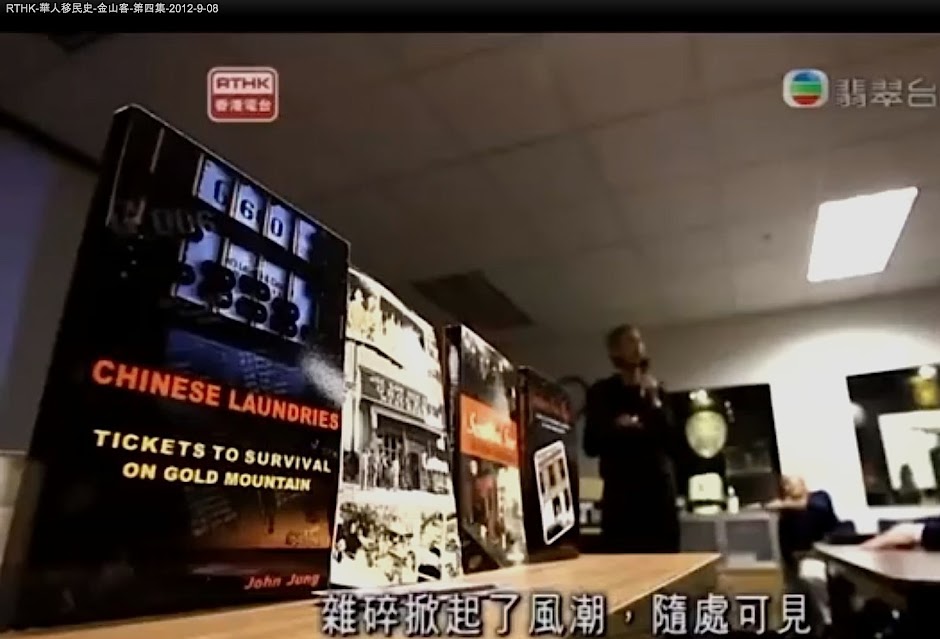Before the Chinese Exclusion Act of 1882 prohibiting the entry of Chinese laborers to the U. S., thousands of Chinese were recruited by labor contractors, both non-Chinese and Chinese, to come work on railroad construction, mines, lumber camps, and other labor-intensive work. It is difficult to underestimate the importance of their role in bringing large numbers of Chinese across the Pacific to work where they did not know the language and customs. Chinese laborers recruited by a labor contractor would be transported to distant sites across the U.S. without their need to know the language, customs, and geography of their work sites.
Below is an ad in 1870 for Sisson, Wallace & Co., a general agent company dealing in Chinese goods, groceries, and all kinds of family supplies in San Francisco. It also promoted the recruitment of supplies of Chinese labor in areas of northern California and Nevada, in particular to the Central Pacific Railroad (CPRR). In 1866, it began to recruit Chinese laborers for the CPRR and was one of the largest contractors. They would hire a Chinese contractor to handle the payments to the workers and arrangements for their room and board.
Another prominent non-Chinese labor contractor was Cornelius Koopmanschap, a Dutch immigrant who began recruiting over 30,000 Chinese laborers in 1861 for railroad construction. By 1870 he expanded his business to bring Chinese labor to the South to work on farms and plantations in Texas, Georgia, and Louisiana but his efforts in 1869 to bring Chinese as replacements for African Americans on cotton plantations failed by 1875. Just before the 1882 Chinese Exclusion Act, he brought several thousand Chinese to work on the Southern and Northern Pacific Railroad construction.
Chinese also served as labor contractors, and having the advantage over whites of being fluent in the Chinese language, were effective recruiters. Ah Quong in Reno, Nevada was an important recruiter who worked with white labor contractors to bring workers for the CPRR.
In the Pacific Northwest, Chin Chun Hock was a very successful labor contractor for railroads and lumber camps, establishing the Wah Chong Company in Seattle in 1868 importing and manufacturing goods including sugar, tea, rice, cigars, opium (legal at the time), and fireworks. In 1873, 20-year-old Chin Gee Hee, became a junior partner until 1888 when Chin Chun Hock bought his share of the business.
Chin Gee Hee then focused on being a labor contractor with his Quong Tuck Company which supplied construction workers to railways (the Great Northern Railway, the Seattle and Walla Walla Railroad and Transportation Company) and other construction projects in the Pacific northwest.
 |
| Chin Gee Hee, a Seattle labor contractor, in his office (1904). |
Chin Gee Hee returned in 1904 or 1905 to China, where he was the entrepreneur behind South China's first railway known as the Sun Ning Railway Company funded with $2.75
million he raised mainly from Chinese emigrants to other countries.
In central California, Ah Louie (his American name) opened a store in 1874 in San Luis Obispo that had many services for Chinese immigrants. It was a grocery and general merchandise store that also served as a bank, post office, medical herb shop, and gathering center.
Most importantly, as a labor contractor, he was the foreman and employment agent of all the Chinese who worked on the Pacific Coast and Southern Pacific Railroads and later he was in charge of recruiting Chinese to work in the quicksilver mines near Cambria, California. His store building is preserved as California Registered Historical Landmark no 802, one of the last signs of a small Chinatown that is now virtually entirely gone. Recently, archeologists have found Chinese artifacts on the site.
In central California, Ah Louie (his American name) opened a store in 1874 in San Luis Obispo that had many services for Chinese immigrants. It was a grocery and general merchandise store that also served as a bank, post office, medical herb shop, and gathering center.
Most importantly, as a labor contractor, he was the foreman and employment agent of all the Chinese who worked on the Pacific Coast and Southern Pacific Railroads and later he was in charge of recruiting Chinese to work in the quicksilver mines near Cambria, California. His store building is preserved as California Registered Historical Landmark no 802, one of the last signs of a small Chinatown that is now virtually entirely gone. Recently, archeologists have found Chinese artifacts on the site.










